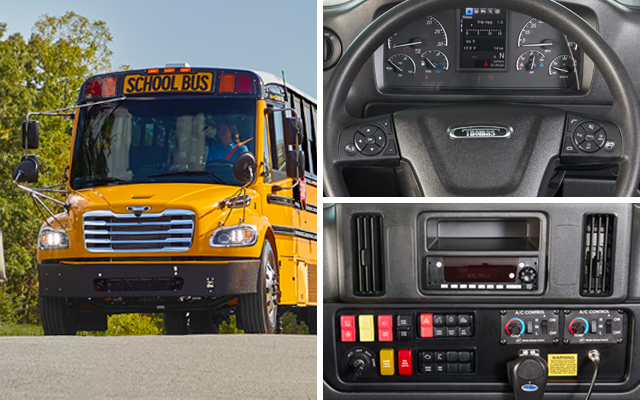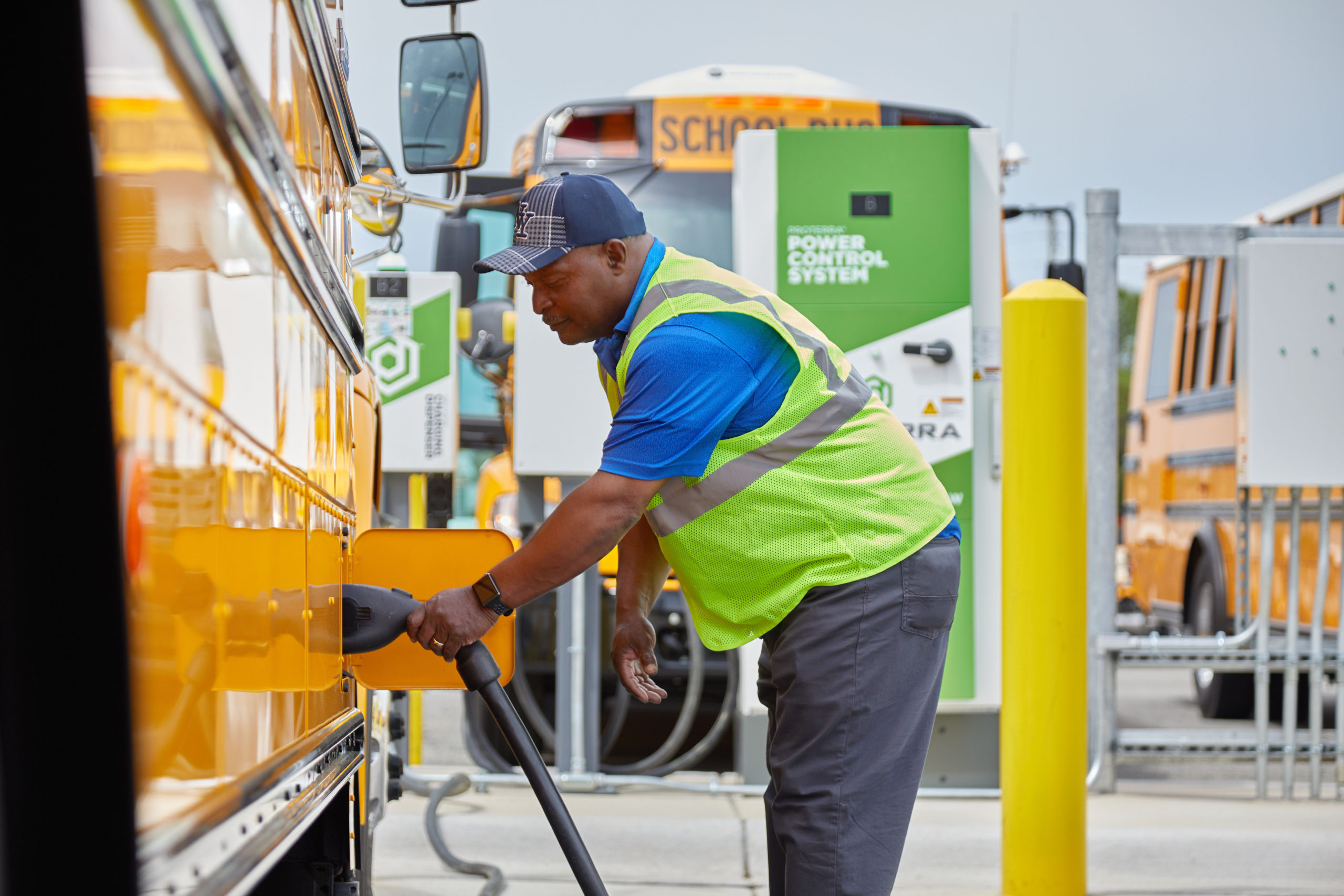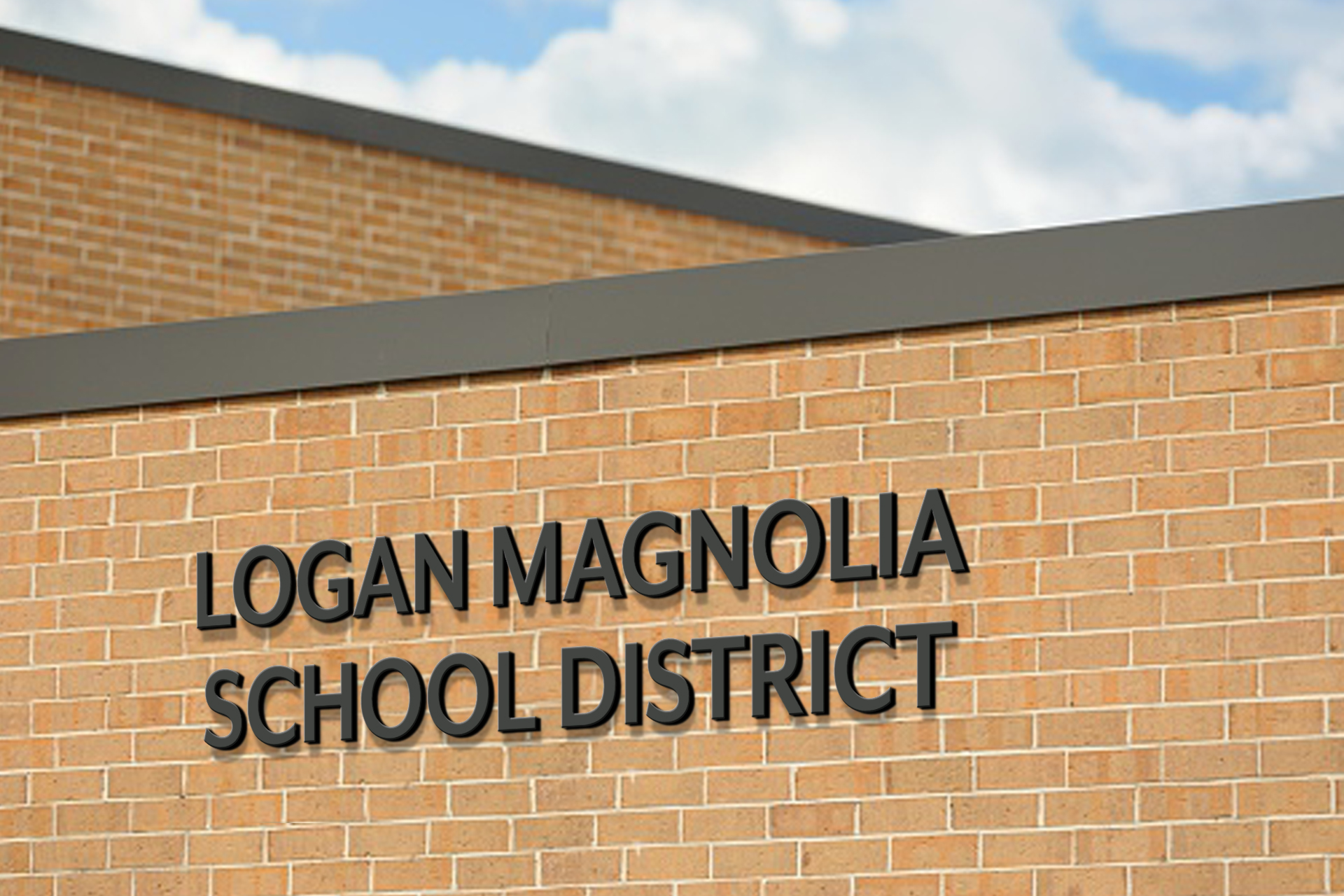
Upgrading the C2’s User-Experience for a New Era of Drivers
Student safety is in the hands of school bus drivers. The more comfortable and confident drivers feel, the more safely they drive.
For the last 20 years, Thomas Built Buses has supplied the industry with advanced electronics engineered with safety prioritized in every detail. Our Saf-T-Liner® C2 was designed…

As electric school buses continue to gain momentum across the U.S. through federal incentives like the EPA’s Clean School Bus Program, school districts are looking for help in transitioning their traditional bus fleets to electric, including building out electric vehicle (EV) infrastructure.
Building and implementing charging infrastructure can be a daunting task, with challenges…

From Kendra Eads, VP of Engineering and Technology at Thomas Built Buses
As we gear up for the back-to-school season, it’s important to recognize the significant advancements in school bus technology that enhance the safety and well-being of our students during their daily journeys.
At Thomas Built Buses, our commitment to safety is evident in our mission and…

(Em)Powering a Greener Future: Logan-Magnolia Community Schools' Journey with Electric School Bus Infrastructure Consulting
In today’s educational landscape, schools across the country are making strides towards embracing sustainable solutions.
A prime example of this is unfolding at Logan-Magnolia Community Schools in Iowa, under the leadership of Kurtis Hinkel, the grounds and transportation director.
Fueled by the vision of transitioning their fleet to electric, the school district recently…

With any school bus purchase, charging/fueling infrastructure is a major consideration. And when it comes to electric school buses, the ins and outs of charging can feel overwhelming. To be frank, charging infrastructure for electric school buses can be expensive and can sometimes be complicated to engineer within an existing bus yard, but with the right partners the feat is not impossible and will pay you dividends in the long-run. Here are a few things to consider when planning charging infrastructure for your new fleet:
The first two questions that you should ask yourself are how many chargers you will require for your fleet and the type of charging infrastructure needed. For a larger electric fleet, you may need your lot or bus yard retrofitted with many chargers. For smaller fleets, a couple of chargers may work. But to make that decision, you must consider more than just number of electric buses in your fleet.
Route length and range – Thomas Built Buses’ Saf-T-Liner® C2 Jouley® Electric school bus can travel up to 120 miles on a single charge. Consider how this range fits into your current routes and how frequently the bus will require charging. With several electric buses in your fleet, you may be able to rotate charging so that not all electric buses are charging at one time and can use the same charger.
Recharge time – Recharge time varies dramatically between types of school buses and charging infrastructure. For example, some electric buses charging via AC power can take well over eight hours to charge. However, Thomas Built Buses’ Saf-T-Liner C2 Jouley powered by Proterra® electric vehicle technology is the only electric school bus in the industry equipped with DC charging capabilities. This enables significantly faster charging than AC alternatives, allowing Jouley to fully charge in as few as three hours. With the Proterra charging system, multiple buses can connect to a single charger which will charge each bus sequentially, so you can charge more buses faster.
Parking – Considering that buses must be plugged into charging infrastructure for several hours, the layout of your lot and parking options is a major consideration. Most charging infrastructure requires access to 3-phase power, so installing the charger close to a building can help to minimize costs.
Consider proximity to buildings as well as parking options around it. With these parameters in mind, some bus yards are not able to accommodate some types of charging infrastructure without utility upgrades to transmission lines, while many new builds or renovated properties can accommodate conduits directly in the ground. Exploring your charging needs and options up front sets the stage for the type or number of buses that may work for you.
Managed vs. unmanaged charging – Unmanaged charging infrastructure isn’t programmed to avoid charging during peak times, costing districts more.
The solution: managed charging infrastructure. Today, managed charging infrastructure allows districts to plug in a bus, and have the bus only charge when and if needed. The chargers can also be programmed to charge the school bus during the least expensive times of day. This new managed charging infrastructure helps to reduce vampire loads and decrease the total energy costs.
Utility provider offerings – Finally, it’s important to coordinate with your local electric utility provider to discuss your charging infrastructure needs. On average, it can take anywhere from 6-12 months to get infrastructure permits, power upgrades, and installation complete so it’s important to begin planning as early as possible. Together with your local Thomas Built representatives, you can discuss rates, possible energy buy-back or battery storage revenues, infrastructure types, AC vs. DC charging options, power location, and more. These discussions will ensure that your bus and charging infrastructure are compatible and as efficient as possible. In addition, some utility providers provide grants or may know of grants available to offset infrastructure costs.
To get started on the road to EV or to explore infrastructure options for your fleet, stop here for more information.
